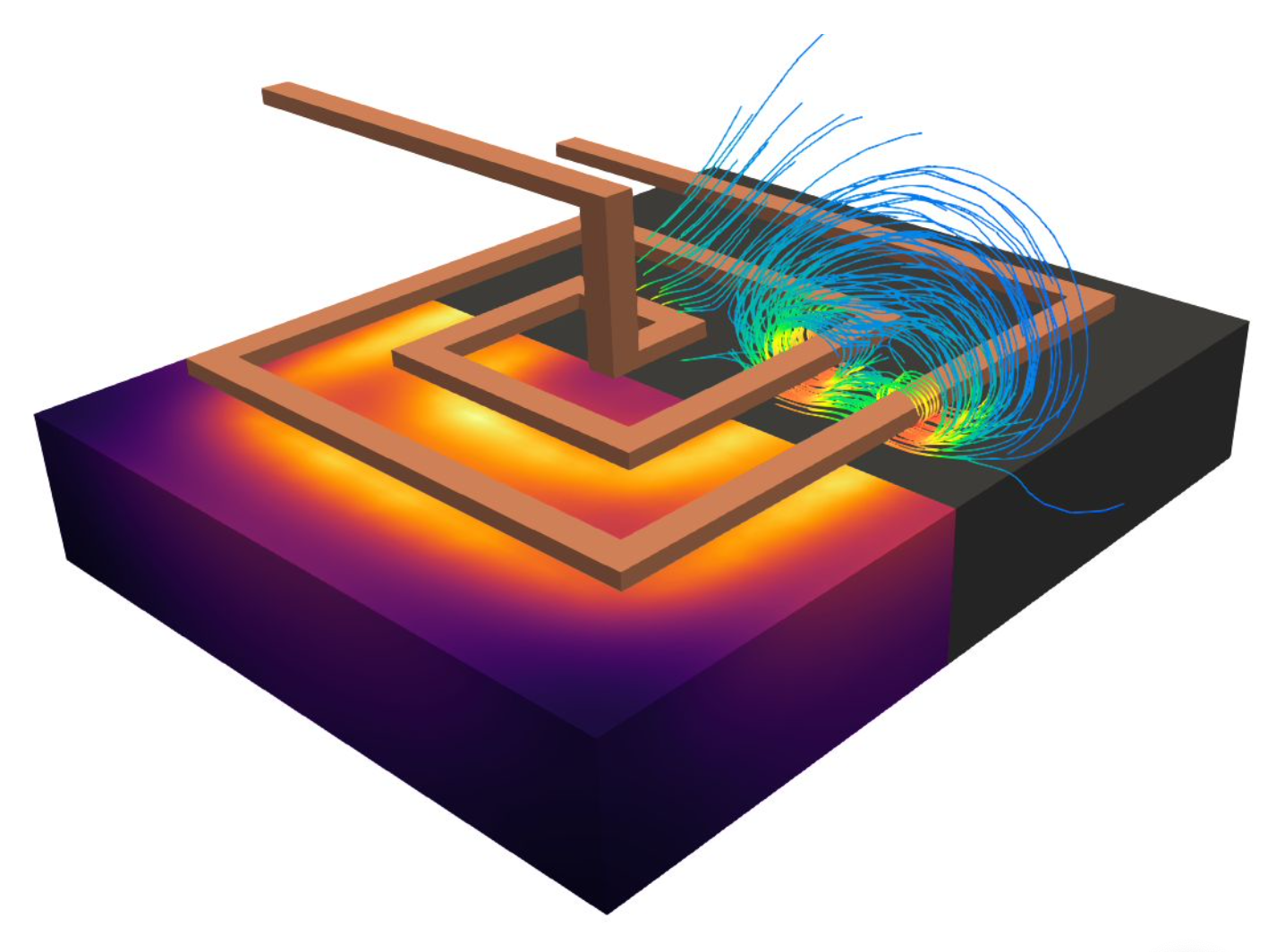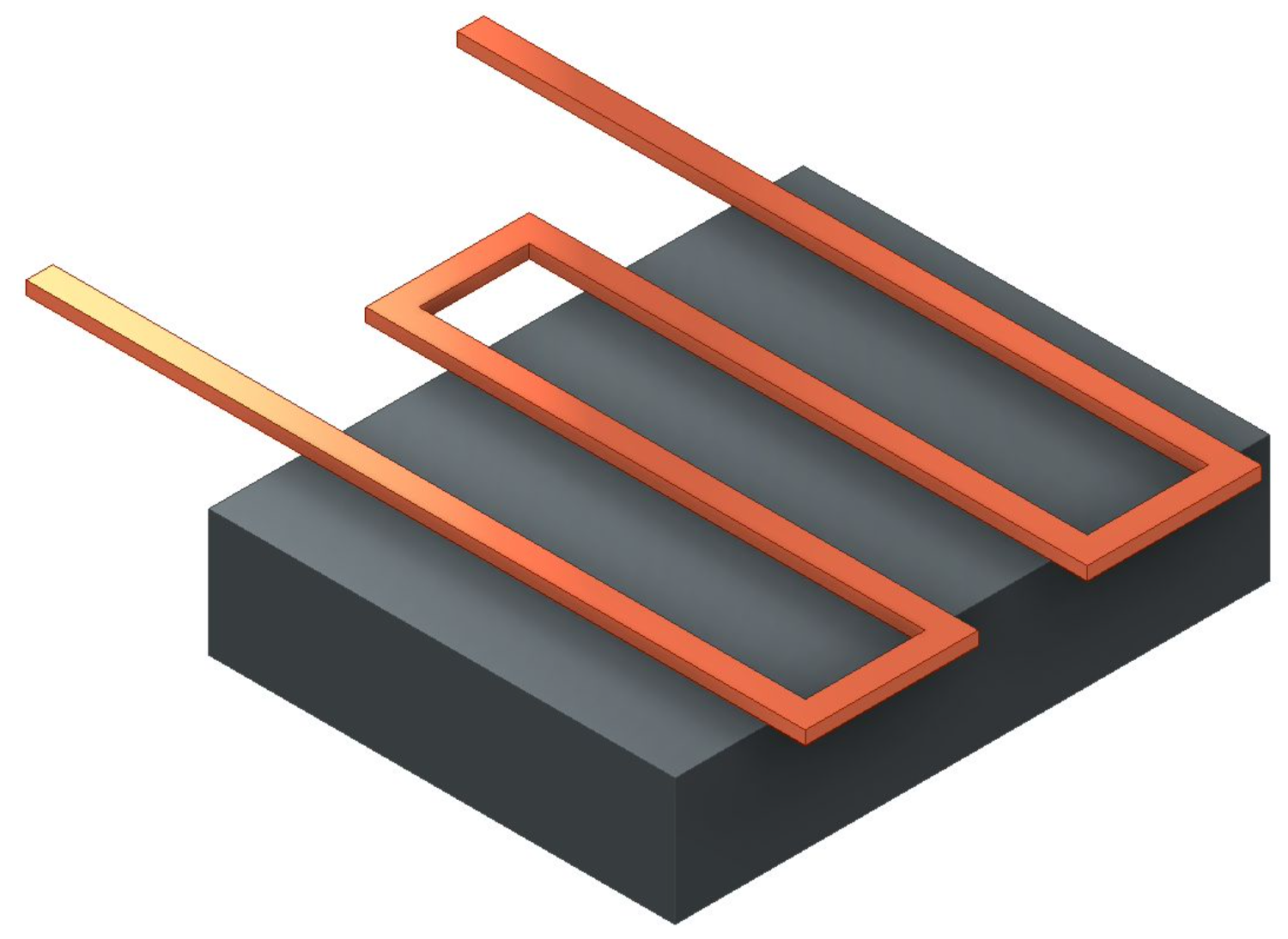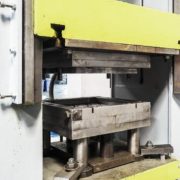Induction heating of press moulds: case study
In the aerospace industry, innovation isn’t just about creating advanced technologies, but it’s also about mastering the art of efficiency. One of the most significant bottlenecks in manufacturing large thermoplastic components, like aircraft skins and spars, is the time-intensive nature of traditional production methods.
With production cycles lasting up to seven hours, companies face pressure to improve throughput while maintaining uncompromising quality. This is where induction heating technology enables faster and more efficient production processes.
This case study dives deep into the induction heating of press moulds, an important step in transitioning from autoclave processing to faster Out-of-Autoclave (OoA) methods. Conducted by Frank van Duin at Fokker Aerostructures, the study explores how simulation software like CENOS can help engineers design optimal moulds, reduce material waste, and cut production cycles.
Through real-world experimentation and comparative analysis with industry-leading tools like Abaqus, this study demonstrates the effectiveness of simulation and provides insights for engineers aiming to refine their processes and stay ahead in the competitive aerospace sector.
What is the challenge?
Induction heating of press moulds presents unique challenges, particularly in the aerospace industry where precision and efficiency are paramount. Traditional methods like autoclave processing are effective but highly time-consuming, taking up to 7 hours to process large thermoplastic parts such as skins and spars.
This inefficiency impacts production cycles and costs, especially for companies dealing with expensive and complex materials like thermoplastics, which must endure extreme temperatures, resist corrosion, and remain lightweight.
Key challenges are the following:
- Material costs: Aerospace-grade thermoplastics are expensive, and inefficient processes lead to significant wastage.
- Prototyping complexity: Designing the right mould often requires multiple prototypes, further increasing costs and time.
- Heating pattern optimization: Achieving uniform heating patterns to maintain material properties is critical but challenging without proper tools.
- Large-scale feasibility: Scaling processes from lab setups to full-scale production demands meticulous planning and testing.
What is the solution?
Simulation software, particularly platforms like CENOS, offers a transformative solution for overcoming these challenges. By enabling engineers to design and test moulds virtually, it eliminates much of the trial-and-error process, saving both time and resources.
Highlights of the solution:
- Accelerated production cycles: Simulations help optimize the induction heating process, reducing production time from 7 hours to just 30 minutes in controlled environments.
- Cost efficiency: Virtual prototyping minimizes material wastage and reduces the number of physical prototypes required.
- High precision: Tools like CENOS allow engineers to predict heating patterns with remarkable accuracy, ensuring the desired material properties are retained.
- Easy adaptability: With user-friendly templates and support for nonlinear material properties, CENOS caters to both new and experienced users. Its compatibility with open-source pre- and post-processors adds flexibility.
- Comparative validation: In experiments by Frank van Duin at Fokker Aerostructures, CENOS delivered results comparable to industry leader Abaqus, but at a fraction of the cost and with enhanced usability.
Simulation steps for induction heating of press moulds:
- Define thermoplastic and mould material properties.
- Estimate power requirements and design coil geometry.
- Simulate and analyze heating patterns to identify the optimal configuration.
- Manufacture mould and inductor based on optimized designs.
Let’s look at the following two types of press moulds and how the simulation visually highlights important aspects of the heating mechanism and electromagnetic interactions, providing engineers with actionable insights.
A. Pancake type of press mould

Heating pattern visualization:
The color gradient across the mould indicates the temperature distribution, with warmer colors (yellow/orange) representing higher temperatures and cooler colors (purple/black) showing areas of lower heat. This visualization helps engineers identify the uniformity of heat across the mould and pinpoint any areas that may require design adjustments for consistent heating.
Magnetic field lines:
The blue magnetic field lines around the coil demonstrate how the electromagnetic field interacts with the mould. These lines offer engineers insights into the efficiency and concentration of the magnetic field, helping them understand how energy is being transferred and whether the design achieves optimal electromagnetic coupling.
Coil configuration and geometry:
The 3D representation of the coil structure showcases the layout and positioning of the inductors. Engineers can evaluate whether the geometry aligns with the heating requirements and decide whether alternative designs (e.g., pancake or meander types) could provide better results based on specific mould shapes or material properties.
Electromagnetic induction efficiency:
The simulation highlights areas of potential inefficiency, such as uneven heating or electromagnetic leakage, which engineers can address through iterative design changes. By adjusting parameters like coil spacing, frequency, or material conductivity, engineers can optimize performance.
Material interaction and performance:
Engineers can assess how different materials (e.g., ferrite blocks or thermoplastics) interact with the electromagnetic field, providing critical data for selecting materials that enhance heating efficiency while minimizing energy losses.
B. Meander type of press mould

Coil design geometry:
The image illustrates a meander-style coil, which is ideal for larger or irregularly shaped moulds. Its linear structure allows for even coverage across the surface, ensuring that heat is distributed more uniformly compared to other designs like pancake coils.
Localized heating optimization:
The design’s flexibility enables engineers to incorporate ferrite blocks at strategic points where currents run in opposite directions. These blocks enhance magnetic field concentration in areas prone to uneven heating, minimizing inefficiencies caused by conflicting electromagnetic interactions.
Heating precision:
The meander design provides control over specific zones of the mould, making it particularly suitable for applications requiring differential heating or tailored thermal profiles. Engineers can fine-tune the coil layout to align with specific material or process requirements.
Design simplicity and scalability:
While the meander-type coil is relatively straightforward to manufacture, it is also scalable. This simplicity makes it a practical choice for industries like aerospace, where precision and repeatability are essential.
Energy efficiency challenges:
The possibility of ferrite block usage comes with trade-offs. While these blocks enhance localized heating, they may absorb some heat, reducing overall system efficiency. Engineers can use this insight to balance the benefits of localized heating against potential energy losses.
Adaptability for complex moulds:
The meander design’s adaptability allows for effective use in complex mould geometries that require varying thermal zones. This makes it a versatile option for applications demanding intricate and precise heating.
What is the result?
The impact of using simulation software like CENOS for induction heating of press moulds is profound, especially for engineers and manufacturers aiming for efficiency and precision.
Key outcomes:
- Time savings: Production cycles for thermoplastics have been cut from hours to minutes, enabling faster delivery and reduced downtime.
- Improved quality: Accurate simulations ensure uniform heating and cooling, preserving the mechanical properties of thermoplastic composites.
- Lower costs: The reduced need for physical prototypes and materials significantly decreases production expenses.
- Scalable solutions: The insights gained from simulations can be directly applied to large-scale production, addressing the challenges of scalability.
For example, two coil designs were tested:
- Pancake inductor design: Ideal for homogeneous heating, though manufacturing tolerances can impact performance.
- Meander inductor design: Suitable for complex moulds, with ferrite blocks enhancing heating in conflicting areas but potentially reducing efficiency over time.
Why is it important?
By using simulation in the induction heating process, engineers are equipped to tackle the challenges of modern aerospace manufacturing with confidence. This approach not only advances production efficiency but also reinforces the industry’s commitment to sustainability and innovation.


